2,000-Year-Old Pristine Painting Discovered in the Volcanic Rubble of Pompeii
The ancient city of Pompeii was only discovered in the 16th century, nearly 1,400 years after it was completely buried in volcanic ash. Since then, archaeologists have been hard at work, excavating this almost perfectly preserved Roman city.
Recently, archaeologists found several beautiful and nearly pristine paintings in one of the homes they were excavating. Naturally, aestheticians, anthropologists, archaeologists, and academics alike are thrilled.
The Story of Pompeii
The story of Pompeii is quite incredible in and of itself. The city was first inhabited by the Greeks in the 8th century BCE, then by the Samnite people. Finally, the Roman Empire took control of Pompeii in 89 BCE.
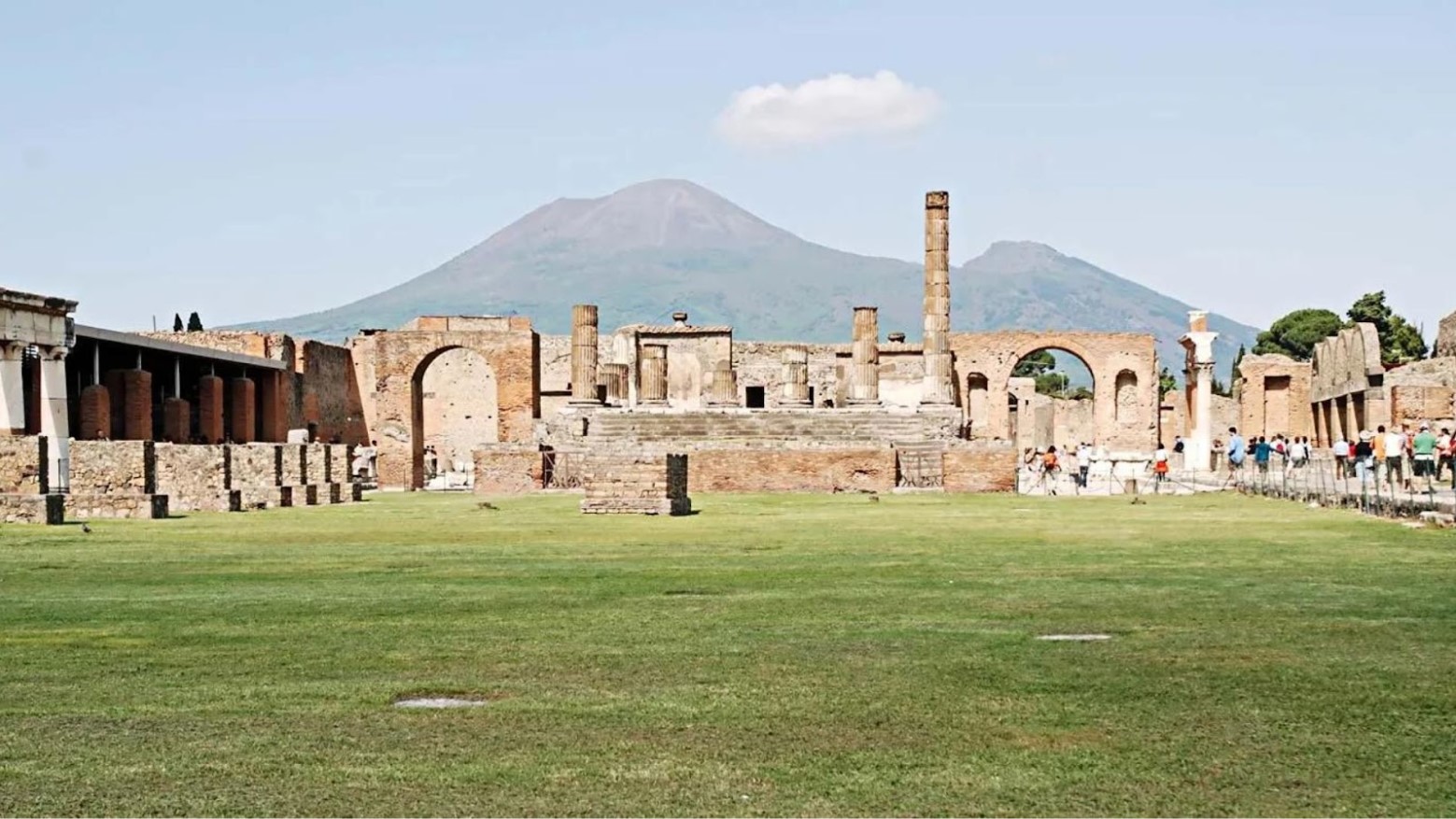
Source: Britannica
For the next 168 years, Pompeii was a bustling metropolis housing between 10,000 and 20,000 Roman citizens. Known for its rich culture, art, and architecture, the city was a true treasure of the Empire until it was completely destroyed in seconds.
The Great Eruption of Mount Vesuvius
In 79 CE, the volcano, known as Mount Vesuvius, which sat just five miles away from Pompeii, erupted with fiery lava and literal tons of volcanic ash. The eruption supposedly lasted 18 hours, during which time Pompeii and the surrounding towns were completely covered in ash.
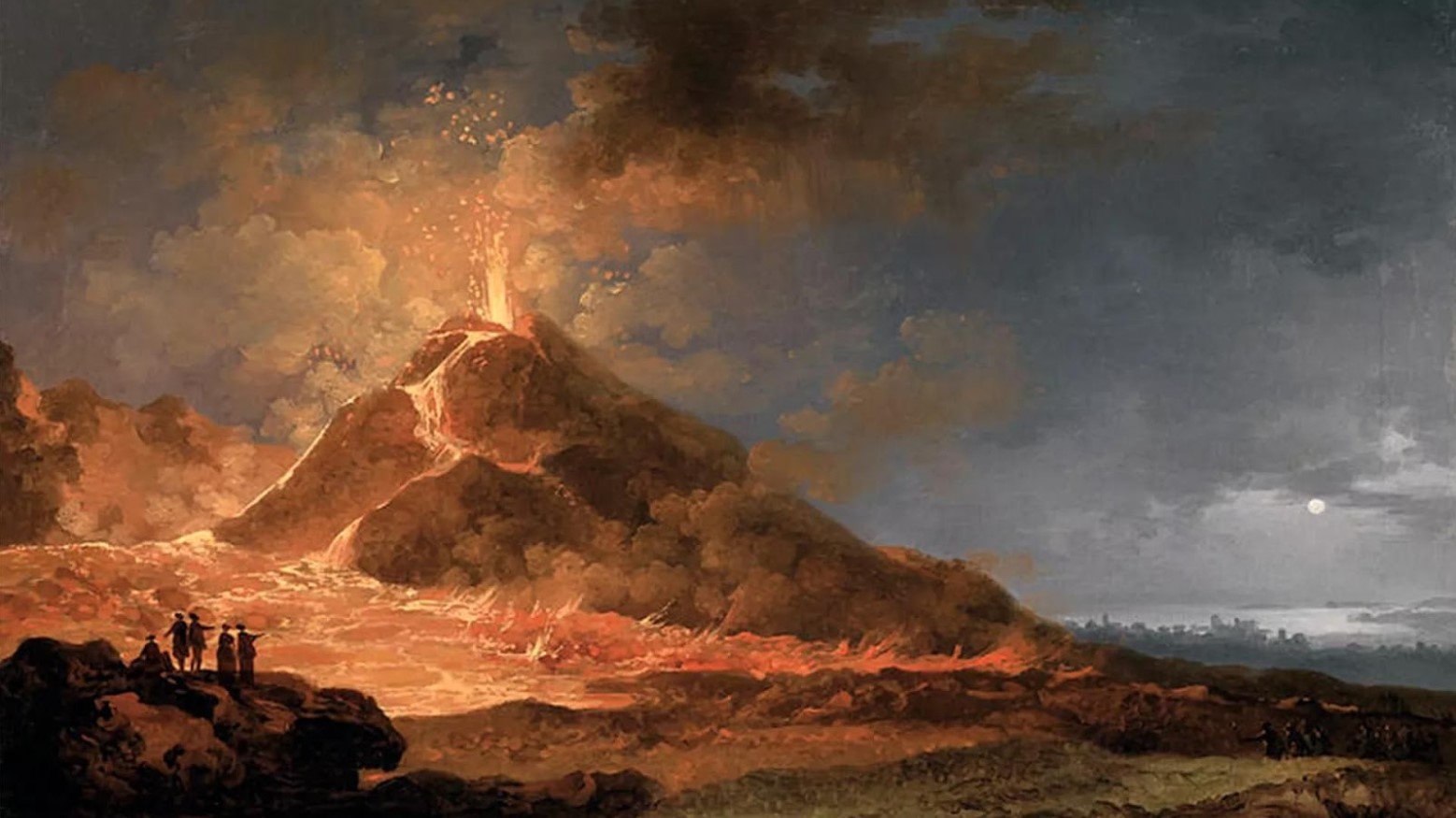
Source: NOAA
In fact, there was so much debris that Pompeii was buried under anywhere between 14 and 17 feet of ash and pumice, not to be seen again for another 1,400 years.
Discovering Pompeii
In the late 16th century, architect Domenico Fontana was planning a build on the ground of what was once Pompeii and found the first evidence of an incredible ancient city below his feet.
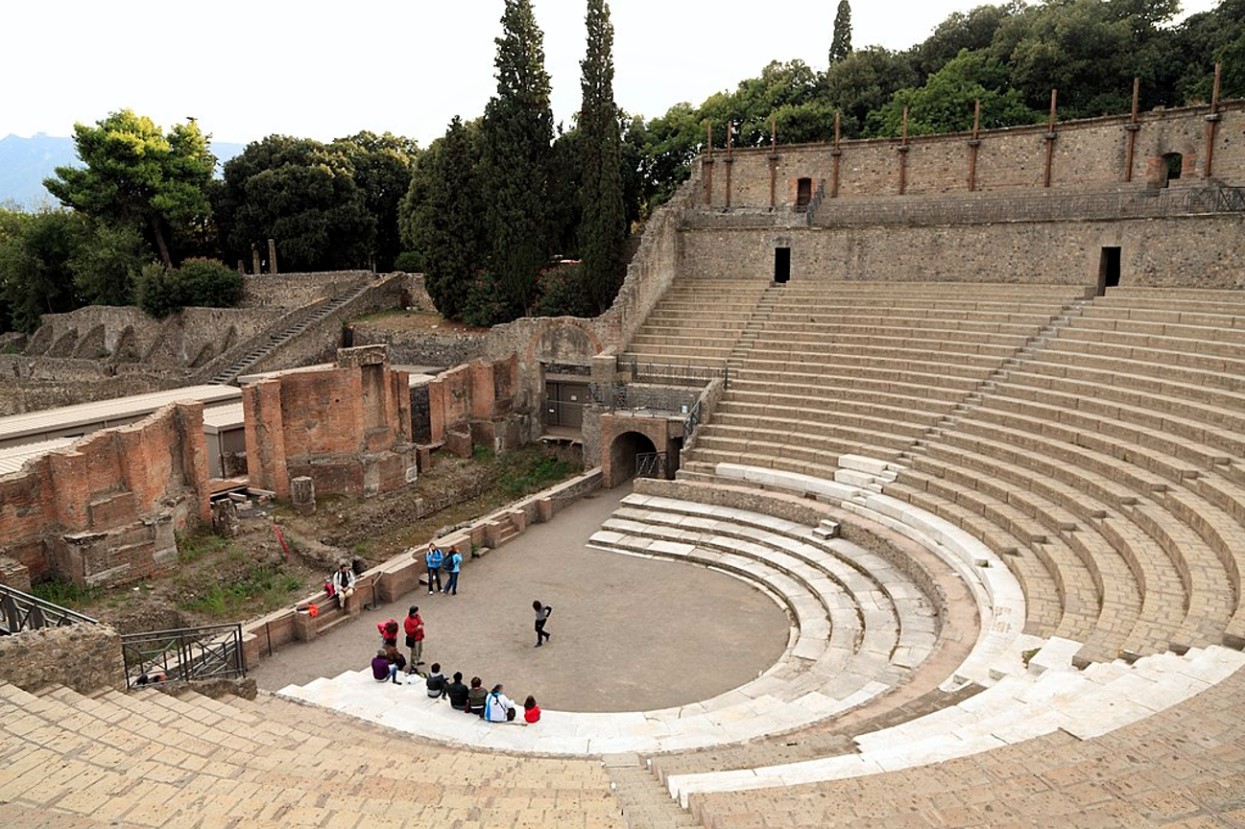
Source: Wikipedia
However, excavation didn’t truly begin until 1748, and for the past 280 or so years, archaeologists have been slowly digging out the ancient city. Over the years, they’ve found entire villas, courtyards, large theaters, temples, artwork, artifacts, skeletons, texts, and so much more, shedding a jaw-dropping amount of light on what life was like for the Romans.
Artwork in the House of Leda
In recent years, the team of archaeologists at the Archaeological Park of Pompeii has been working to excavate a home they call the House of Leda.

Source: Parco Archeologico di Pompei
They named the home after the beautiful painting “The Domus of Leda and the Swan,” which they uncovered inside. The painting of Leda and the Swan quickly became one of the most famous pieces of art to be found at Pompeii for its historical significance and craftsmanship.
Leda and the Swan
The star of the painting, Leda, was the wife of Tindar, king of Sparta, in ancient Greek mythology. Queen Leda was best known for being the object of Zeus’ affection, even though she was betrothed to Tindar.
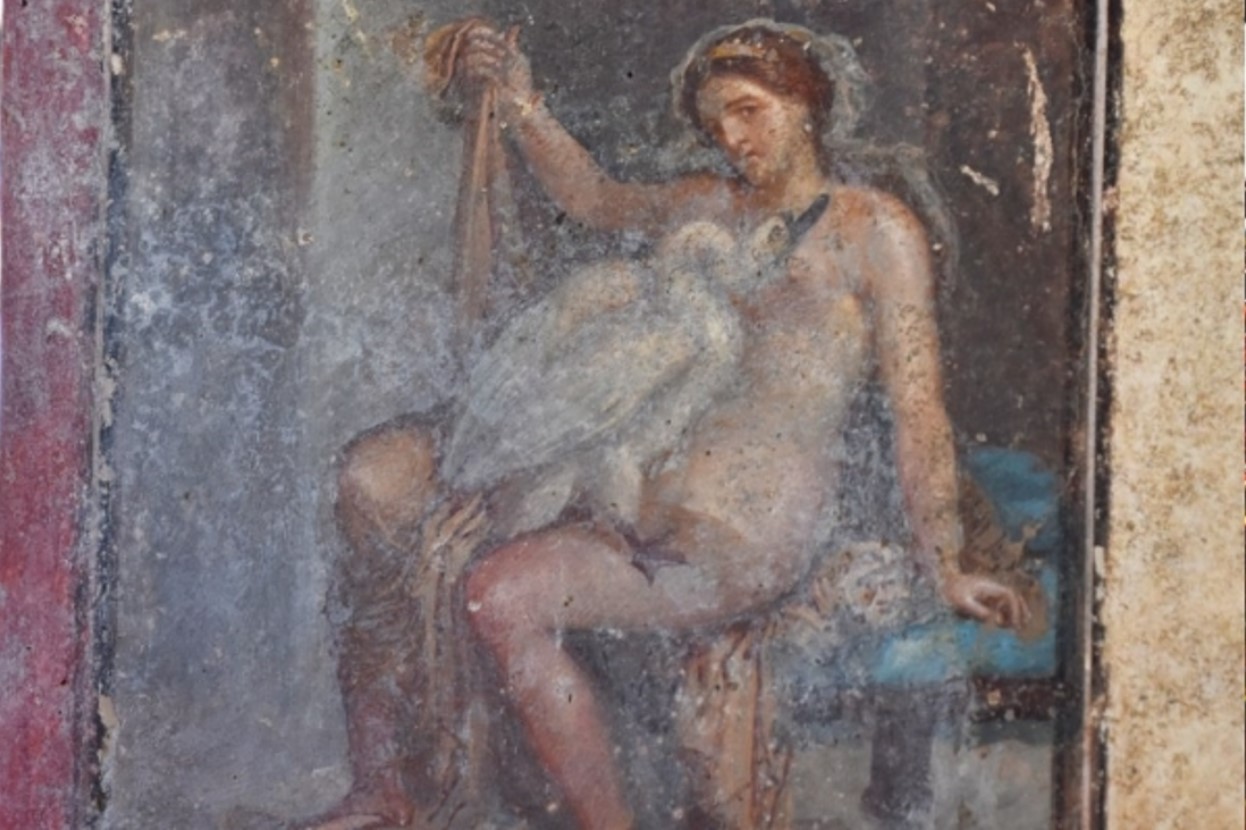
Source: Parco Archeologico di Pompei
The story goes that Zeus ignored Leda’s commitment to her soon-to-be husband and seduced her on her wedding night by turning himself into a swan. After spending the night with her, she became pregnant with the famous Helen of Troy.
Now, Archaeologists Have Found Another Mythological Painting
There were other pieces of awe-inspiring artwork in the House of Leda, but archaeologists are especially excited about the newest discovery, which is another based on Greek mythology stories.
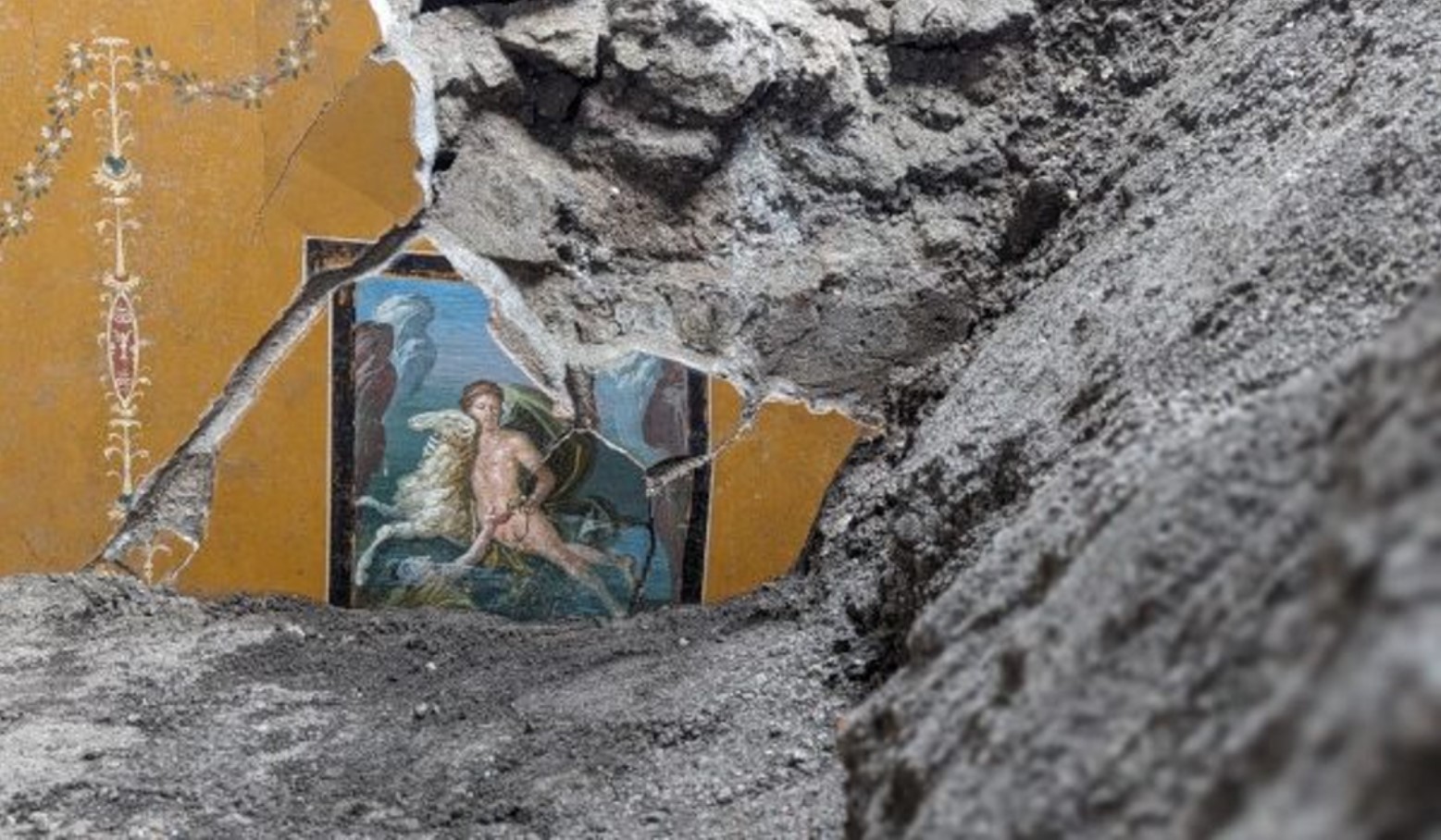
Source: Parco Archeologico di Pompei
The painting portrays Phrixus and Helle, twin Greek gods who have quite an amazing story. The twins apparently fled from their evil stepmother and were rescued by a golden ram.
The Story of Phrixus and Helle
The golden ram that rescued the twins as they tried to escape over the sea was actually their real mother. However, when Phrixus and Helle mounted her back to fly to safety, Helle fell off.

Source: Wikipedia
Some versions of the story say she died by drowning, while others say she was saved by Posideon and turned into a sea goddess. Luckily, Phrixus survived and became the son-in-law of a faraway king.
The House of Leda Painting of the Golden Ram
The painting found in the House of Leda shows this exact mythological tale, including Phrixus riding the ram and Helle reaching out to her brother as she falls into the ocean below.
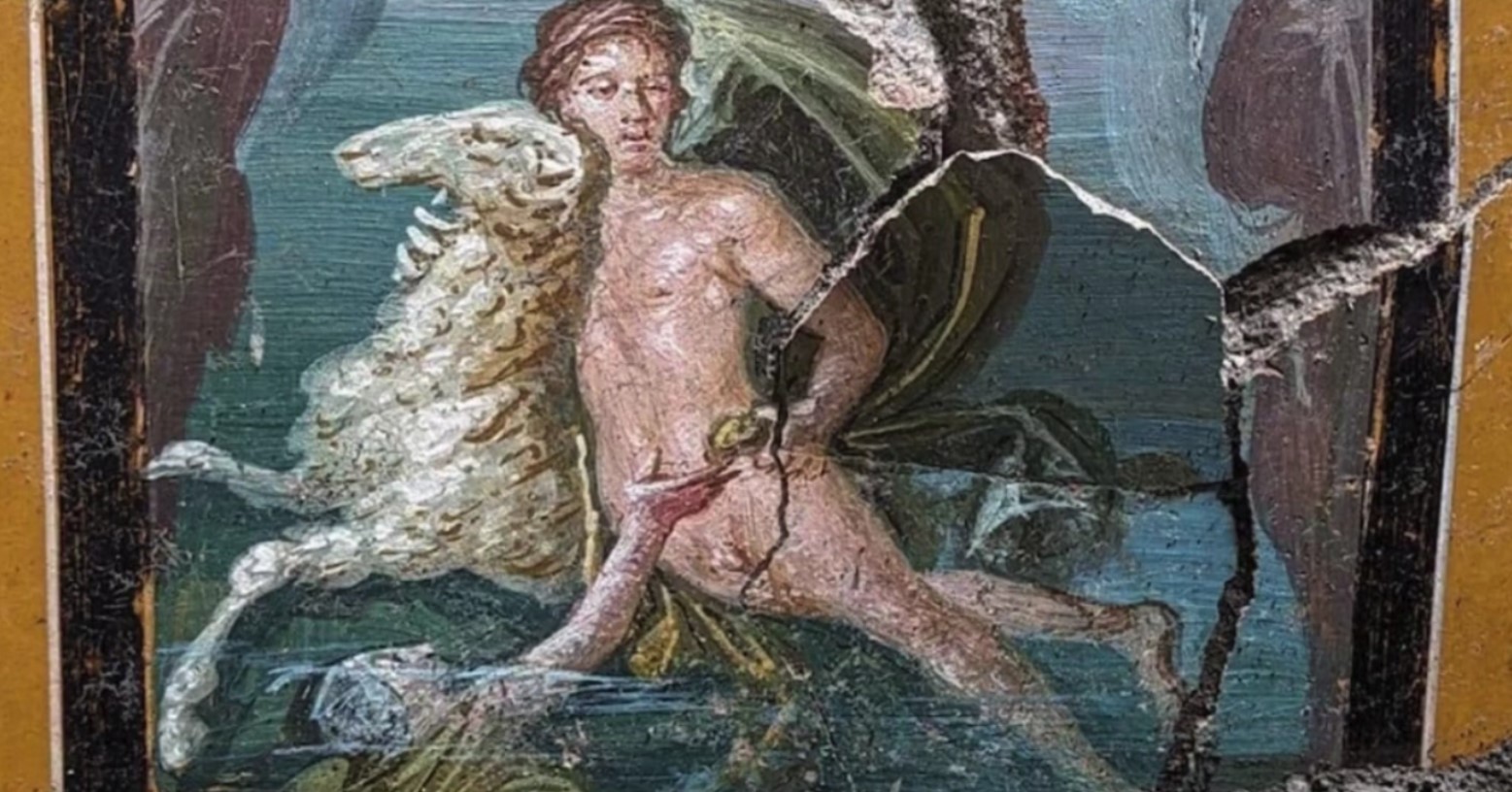
Source: @WonderWorld/YouTube
While the story is certainly interesting, experts are even more thrilled to report that the fresco is in almost unbelievably pristine condition.
They Believe the Artwork Was Painted 2,000 Years Ago
Because of the timeline of Pompeii and the artwork itself, experts are certain that the exquisite piece of art was painted around 2,000 years ago.
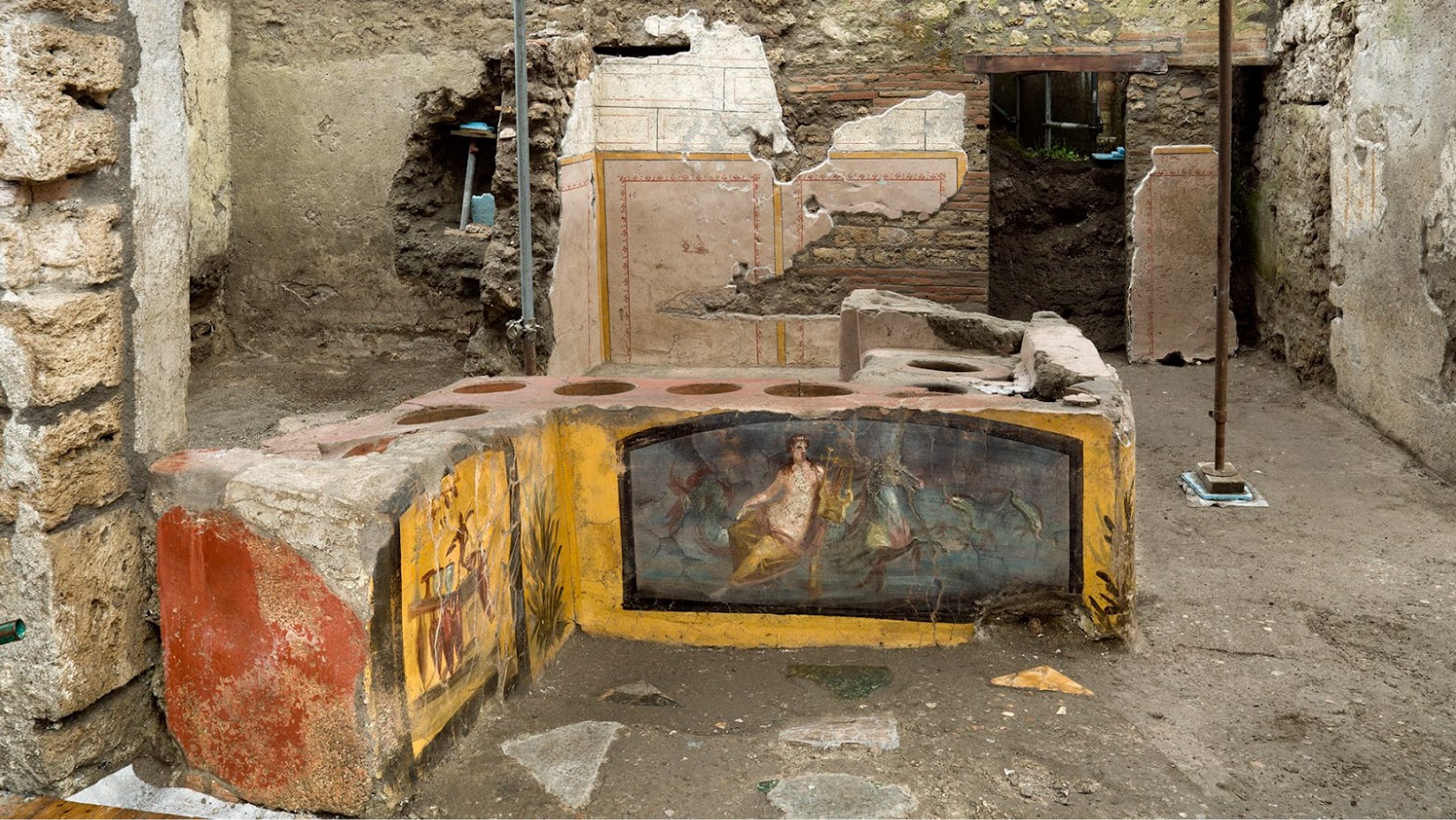
Source: Alamy
However, two millennia later, the colors are still vibrant, the brush strokes visible, and the integrity of the piece is completely intact. While the top right corner has fallen off, and there are a few cracks, the rest of the painting is nearly perfect.
This Really Is a Rare and Exciting Discovery
While many murals and pieces of artistic works have been discovered in Pompeii, it is quite rare for archaeologists to find one as well preserved as that of the mythical ram.
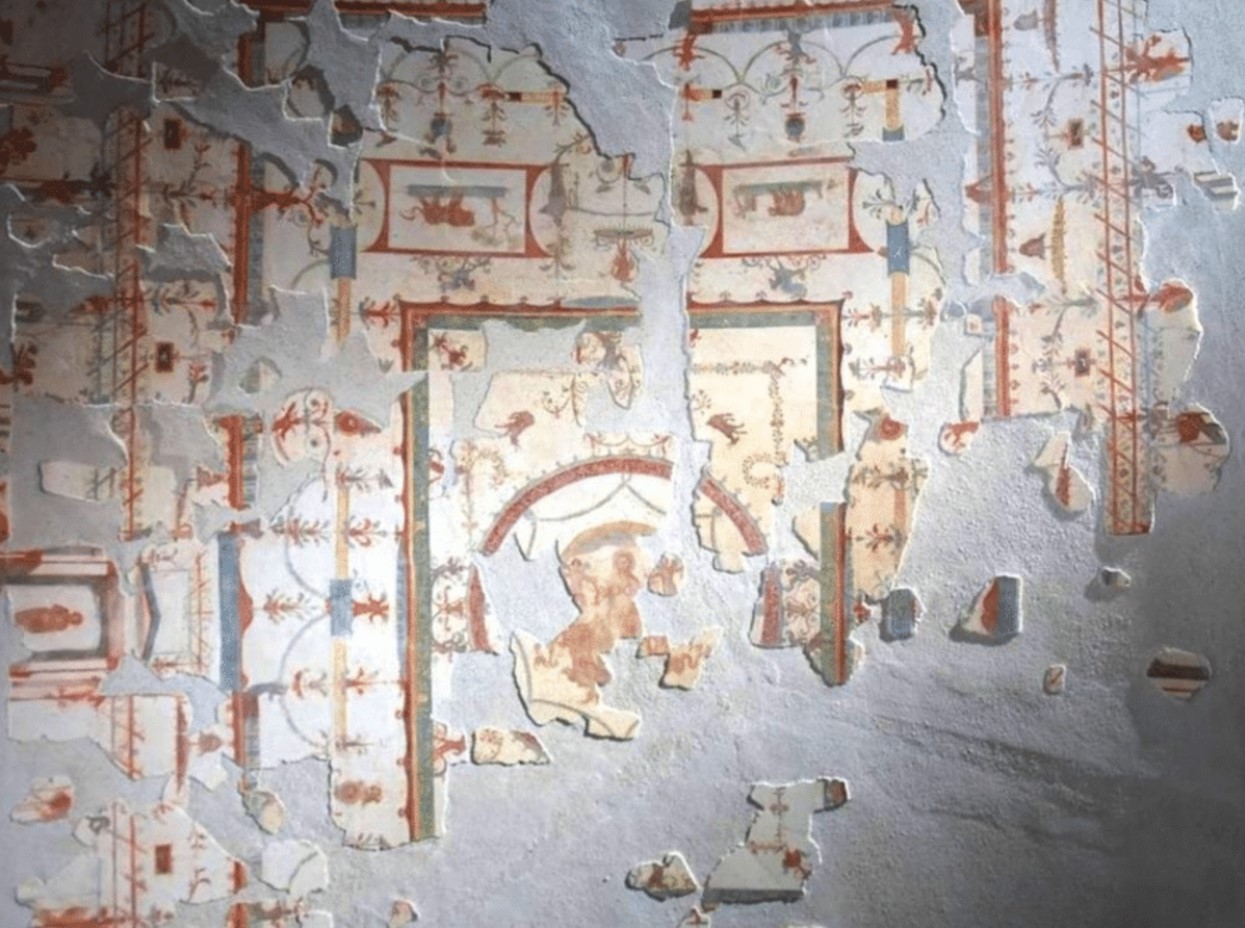
Source: Astri K. Lundgren/Research Gate
As they continue to excavate the House of Leda, they hope to find more impressive paintings like the two they have already found, but only time will tell if more treasures are hidden beneath the ashes.
The Fresco Will Soon Be on Display at the Museum in Pompeii
Even if they don’t find anything else, the two paintings of Helle, Phrixus, and the Ram, and Leda and the Swan, are still enough to consider the House of Leda an incredible discovery.
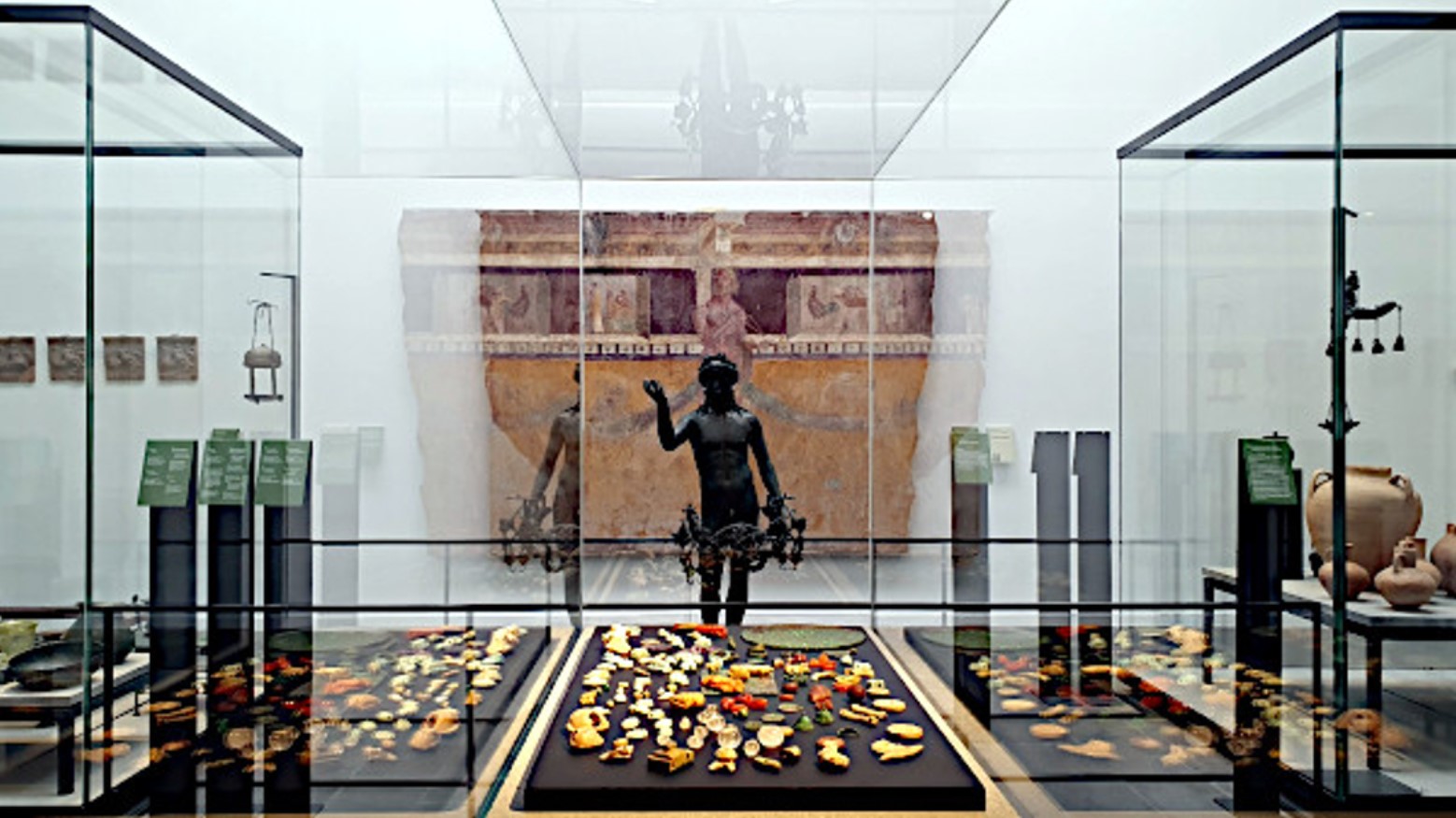
Source: Pompeii Archaeological Site
And when the archaeologists can safely remove the painting from the wall in the House of Leda, it will be prominently displayed at the on-site museum in Pompeii for the more than three million annual visitors to admire and enjoy.
